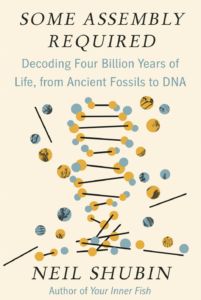Bill McKibben: COVID-19 Is Presenting Us With an Opportunity to Reconceptualize Our Social Lives
It's awkward to discuss silver linings while so many people are suffering and when things might get much worse before they become better. That said, COVID-19 appears to be presenting us with an opportunity to reboot how we should be interacting with each other. Bill McKibben discusses this opportunity at Yale365:
[As Society Reopens], we might actually find ourselves embracing gregariousness. In truth, we began social distancing a long time ago. First came the move to the suburbs: In the postwar years, America spent the bulk of its prosperity on the task of building bigger houses farther apart from each other. This caused environmental woes — all those big houses to heat and cool and migrate between — but it also meant that we simply ran into each other less. The average size of a new house has doubled since 1970,  even as the number of people living in it has steadily shrunk — the average density of most recent housing developments is about two people per acre, down from about 10 persons per acre for cities, suburbs, and towns in 1920. Between 1974 and 1994 the fraction of Americans who said they frequently visited with their neighbors fell from almost a third to barely a fifth. That number has kept dropping, now less because of suburbanization than because of screens: If you look at teenagers, for instance, a wild behavioral shift is noticeable beginning about 2012 when the numbers of Americans with a smartphone passed the 50 percent mark. The number of young people who got together with their friends in person every day dropped by 40 percent from 2010 to 2015, a curve that seems to be accelerating according to Jean Twenge, a psychology professor at San Diego State University.
even as the number of people living in it has steadily shrunk — the average density of most recent housing developments is about two people per acre, down from about 10 persons per acre for cities, suburbs, and towns in 1920. Between 1974 and 1994 the fraction of Americans who said they frequently visited with their neighbors fell from almost a third to barely a fifth. That number has kept dropping, now less because of suburbanization than because of screens: If you look at teenagers, for instance, a wild behavioral shift is noticeable beginning about 2012 when the numbers of Americans with a smartphone passed the 50 percent mark. The number of young people who got together with their friends in person every day dropped by 40 percent from 2010 to 2015, a curve that seems to be accelerating according to Jean Twenge, a psychology professor at San Diego State University.
Photo by Erich Vieth


